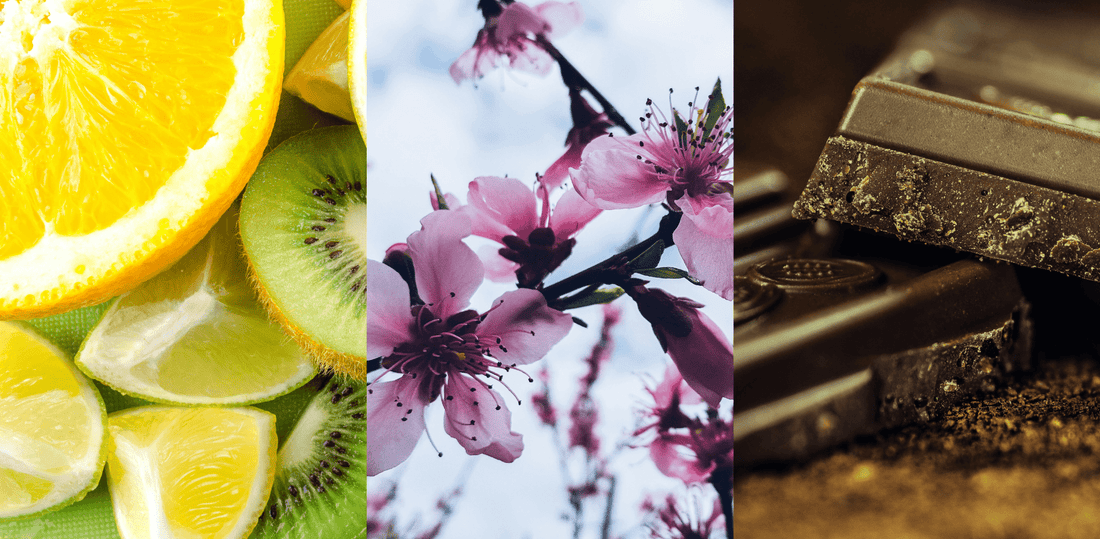
How to Pick Coffee Beans Based on Your Taste Preferences
Choosing the right specialty coffee beans is about matching flavor profiles to what you love—bright and fruity, sweet and caramelly, or rich and chocolaty. Use this guide (and our Coffee Taster’s Flavor Wheel series) to zero in fast.
Step 1: Know the Big Flavor Categories
Start with the primary flavor families of specialty coffee. These connect directly to origin, processing, and roast level.
- Fruity — berry, citrus, tropical fruit (common in Ethiopian naturals).
- Floral — jasmine, rose, lavender (often high-elevation, lighter roasts).
- Nutty & Chocolaty — almond, hazelnut, cocoa (Brazil, Guatemala).
- Sweet & Caramelized — brown sugar, caramel, toffee (balanced medium roasts).
- Spice & Earthy — cinnamon, clove, tobacco (Indonesia, Sumatra).
Want a quick primer? See our Flavor Wheel overview and dive into each category from there.
Step 2: Understand Roast Levels
- Light Roast — maximum origin character; higher acidity; floral/fruit clarity.
- Medium Roast — balanced sweetness and body; caramel, chocolate, nuts.
- Dark Roast — bold, lower acidity, roast-forward intensity.
Step 3: Single Origin vs. Blend
We broke this down in Single Origin vs. Blends: What True Coffee Lovers Need to Know, but here’s the quick version:
- Single Origin — terroir and distinctiveness (Ethiopia = fruit/flower; Colombia = caramel/citrus; Brazil = chocolate/nut).
- Blends — curated balance and consistency (great daily drinkers; friendly for milk).
Step 4: Match Beans to Your Brewing Method
- Espresso — medium to dark; chocolate, nutty, caramel notes cut through milk.
- Pour Over (V60, Chemex) — light to medium single origins for clarity and complexity.
- French Press — medium/dark roasts for body and chocolatey depth.
- Cold Brew — beans with natural sweetness: caramel, chocolate, or berry.
Dial in ratios with our guide: Brewing Ratios for Every Method.
Step 5: Consider When You Drink Coffee
- Morning — bright citrus or sweet caramel to wake up without heaviness.
- Afternoon — balanced medium roasts (nutty/chocolaty comfort).
- Evening — choose Swiss Water decaf to keep flavor, skip the buzz.
Step 6: Use the Flavor Wheel to Shop
The Coffee Taster’s Flavor Wheel is your shortcut. Start at the center (fruity, sweet, nutty) and work outward (raspberry, caramel, almond). A few fast mappings:
- Berry lover? Look for Ethiopian natural-processed coffees.
- Caramel sweetness? Try a Guatemalan medium roast.
- Dark chocolate? Brazilian-forward blends deliver reliable cocoa/nut depth.
Step 7: Processing Changes the Taste
Same origin, different process, completely different cup. Our primer: Washed vs. Natural vs. Honey. Then go deeper:
Quick Picks by Taste Preference
- Fruit & brightness — light roast, natural-processed Ethiopia or Kenya.
- Chocolate & nutty — medium roast Brazil/Guatemala or a balanced house blend.
- Caramel sweetness — medium roast washed Central America (Guatemala, Costa Rica).
- Bold & intense — fuller-bodied dark or medium-dark with low acidity.
- Decaf, full flavor — Swiss Water Process decaf with caramel/chocolate notes.
Final Thoughts
Ask one question first: Do you want fruity and bright, sweet and smooth, or bold and earthy? Then choose the roast, origin, and process to match. Use our Flavor Wheel posts as a reference, experiment across brew methods, and keep notes on what you love.
Ready to explore? Build your lineup and never run out with our coffee subscription, or shop our latest single origin and blends.
Further reading: Single Origin vs. Blends • Coffee Taster’s Flavor Wheel • What “Specialty Grade” Actually Means
